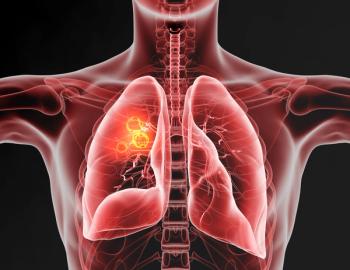
Artificial Intelligence Can be Leveraged to Minimize Casualties of the Opioid Epidemic
There are currently firms working to use artificial intelligence in hopes that it could contribute to minimizing the impact of the opioid epidemic.
The crisis of opioid use, abuse, addiction, and subsequent overdose deaths has reached epidemic proportions in America with no clear end in sight. As of March 2018, the National Institutes of Health reported that more than 115 Americans per day are dying as a direct result of opioid overdoses. In late 2017, it was reported that the US life expectancy had dropped for a second consecutive year, due in part to a surge in fatal opioid overdoses.
For perspective, US life expectancy had not dropped for a single year since 1993, which at the time was a direct result of the AIDS epidemic, and had not dropped for consecutive years since the 1960s. Further, the CDC has estimated that as a result of only prescription opioid abuse, the total yearly economic burden to the United States totaled upwards of $78.5 billion—including the costs of health care, lost productivity, addiction treatment, and involvement of the criminal justice system—and clearly this shocking figure excludes the abuse of illicit opioids, such as heroin.
Complex problems require multidimensional answers. There are currently firms working to use artificial intelligence (AI), some through the use of machine learning (ML), in hopes that it will contribute to solving this problem or at least minimize its impact. An incredibly elementary explanation of the relationship between AI and ML is as follows: ML is a subset of AI—and ML itself contains a further subset known as deep learning—and all ML can be considered AI, but not all AI is considered ML. To delve any deeper into the interconnected relationship between AI, ML, and deep learning would be beyond the scope of this article, but it is important to briefly note the distinction.
At times, there are conflicting views within the chemical dependency treatment field as to what the term recovery means, relating to the substances from which an opioid addict actually abstains. However, most would agree that recovery from opioid addiction, regardless of your view of what recovery means, is a challenging and sometimes seemingly impossible goal to not only achieve but also maintain on a long-term basis.
Relapse is an unfortunate but common part of the story along the path of an opioid addict seeking recovery. And due to the fact that opioid tolerance can drastically decrease during a period of abstinence, relapse with opioids frequently leads to overdose and death.
Here lies an area of opportunity in which AI may be useful in minimizing the deaths related to opioid overdose. Since 2014, a Chicago firm called Triggr Health has been using ML through its platform to both predict addiction recovery relapses and help target prevention strategies.
Clients are referred by their health care provider to use the Triggr platform. As of mid-2018, Triggr was exclusively marketed to health care systems and providers, with future expansion planned that would also target individual consumers. After the client downloads the Triggr app to their smartphone, the ML-based platform monitors the client’s smartphone data and activity, such as texting patterns, phone location, and sleep history.
The goal of this monitoring is to identify patterns that indicate a stronger likelihood of a relapse. Information gathered related to these patterns is combined with data such as client drug history and keywords such as “craving” from communications between Triggr Health users and staff, in hopes of identifying whether an individual is at risk of relapse.
Triggr provides access to 24/7 support and in the event of a client’s risk reaching peak levels, a member of the individual’s addiction treatment team is notified of the situation as swiftly as possible so that immediate preventative action can be taken. Through this comprehensive and personalized solution based upon AI technology, Triggr seeks to save lives.
Behaivior (intentionally misspelled) is a Pittsburgh-based startup that also seeks to use an ML platform and algorithms to minimize relapse in recovering opioid addicts. However, Behaivior is attempting to distinguish its solution through the incorporation of wearable technology.
The wearable device can collect objective data such as heart rate, skin temperature, and heart rate variability in real-time. When assessed in conjunction with the monitoring of behavioral data (such as location via GPS monitoring), the ML platform can assess whether the user is in a pre-relapse state of craving, a dangerous situation for any opioid addict in recovery. Although this company is still in its start-up stage, the idea that AI (through ML) could be used in such a manner to prevent relapse is certainly both intriguing and promising.
Clearly, there are barriers to adopting some of these technologies, such as patient hesitation to wearable devices, physical and data privacy concerns, HIPAA regulations, and related trepidations. However, the fact remains that we have a tragic problem that has progressively worsened—and although there have been areas of light at various points along the way, overall there is no end in sight regarding the crisis we currently face related to opioid addiction. Less talk and more tangible solutions are needed, such as those offered by Triggr and hopefully by Behaivior in the near future.
The opioid epidemic is a complicated, multifaceted problem and consequently will require a complex solution using numerous entities, stakeholders, and technologies. With the ability to be part of the solution through the application of data analytics and technology coupled with the added ability to scrutinize large amounts of data, AI can contribute to solving this critical and urgent problem.
Works Cited
About the Author
Lee Feigert earned his Doctor of Pharmacy from Duquesne University in Pittsburgh, PA. For over five years, he was employed in a transitional-care pharmacist role at a 300+ bed inpatient psychiatric hospital. Currently he is employed as a consultant pharmacist for a Program of All-Inclusive Care for the Elderly (PACE) program in Pennsylvania. He most recently earned his Master of Science in Pharmacy Business Administration (MSPBA) program at the University of Pittsburgh, a 12-month, executive-style graduate education program designed for working professionals striving to be tomorrow’s leaders in the business of medicines.
Newsletter
Stay informed on drug updates, treatment guidelines, and pharmacy practice trends—subscribe to Pharmacy Times for weekly clinical insights.















































































































































































































